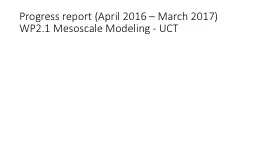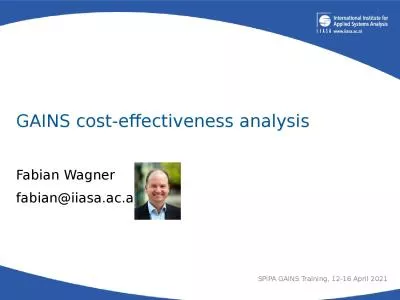Cost of Service Studies April 14, 2016 1 Used to
Author : pasty-toler | Published Date : 2025-06-27
Description: Cost of Service Studies April 14 2016 1 Used to reasonably allocate costs revenue requirement incurred by utility amongst customer classes 2 Types of COSS Embedded Look at costs from a historical perspective some costs that were
Presentation Embed Code
Download Presentation
Download
Presentation The PPT/PDF document
"Cost of Service Studies April 14, 2016 1 Used to" is the property of its rightful owner.
Permission is granted to download and print the materials on this website for personal, non-commercial use only,
and to display it on your personal computer provided you do not modify the materials and that you retain all
copyright notices contained in the materials. By downloading content from our website, you accept the terms of
this agreement.
Transcript:Cost of Service Studies April 14, 2016 1 Used to:
Cost of Service Studies April 14, 2016 1 Used to reasonably allocate costs (revenue requirement) incurred by utility amongst customer classes 2 Types of COSS Embedded – Look at costs from a historical perspective (some costs that were incurred 15+ years ago) Marginal – Look at costs from a theoretical perspective of producing an additional unit of energy and what does it cost to produce that unit. (Argued to be a better price signal for current behavior) 2 Cost of Service Studies (“COSS”) Marginal Cost of Service Studies - Purpose and Rate Setting Goals The customers that cause the costs pay for those costs=Cost Causation Nevada uses Marginal Cost Pricing to determine the fair share of electric service that each class of customer pays – Limit interclass and intraclass subsidies Marginal costing estimates the cost to provide: the next unit of Generation, Transmission, and Distribution demand the next kWh of Energy (including fuel & purchase power cost), the facilities to hook up the next customer (Facilities, Services, Meters), and the cost to provide Billing and Customer Service to that customer NV Energy designs rates to collect the PUCN approved overall and class revenue requirements – enhance revenue stability 3 NAC 704.660 Consideration of marginal cost of service in determining class revenue requirements. (NRS 703.025, 704.210) The Commission will consider a utility’s marginal (incremental) cost of service to each class of customer in determining the revenue required from that class. [Pub. Service Comm’n, Gen. Order 33 § 2.0, eff. 9-17-82] NAC 704.662 Rate design based on marginal cost of service. (NRS 703.025, 704.210) 1. The rates charged by the utility for supplying electricity to customers of a particular class must reflect the marginal (incremental) cost of serving that class, including any seasonal or hourly differences in the cost of the service, unless the Commission determines, in a proceeding to establish or change the rate, that: (a) In the case of a proposed rate which reflects seasonal differences in the cost of service: (1) Those differences are so insignificant …; or (2) Application of the proposed rate would unreasonably affect the utility’s financial condition. (b) In the case of a proposed rate which would reflect hourly differences in the cost of service, the cost of providing meters …would be greater than the benefits of conservation of electric energy and efficient use of facilities and resources which would be obtained from use of














